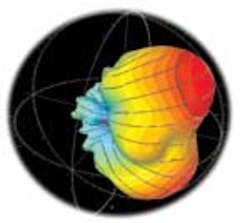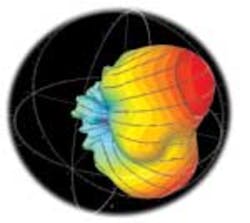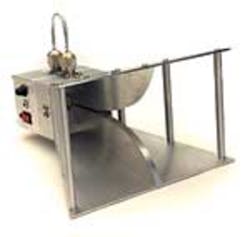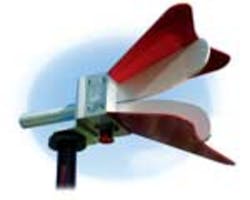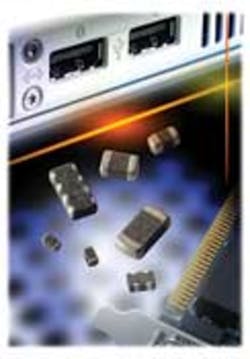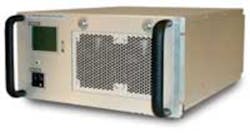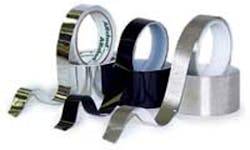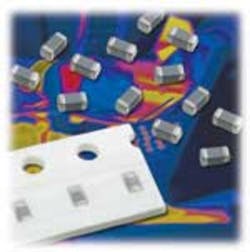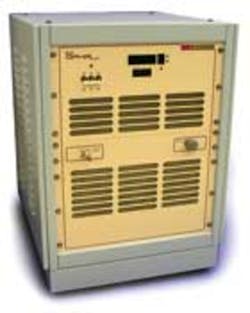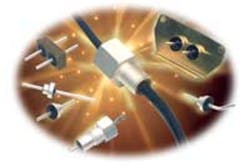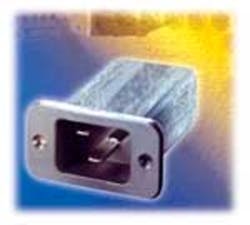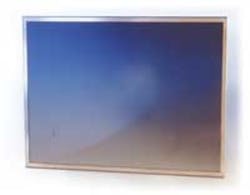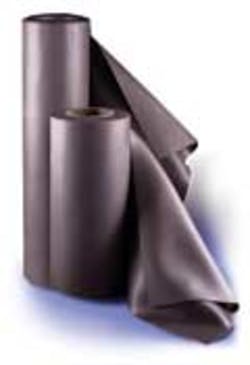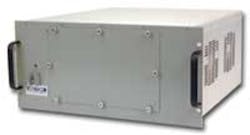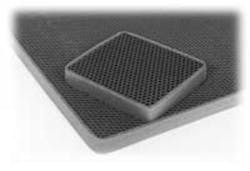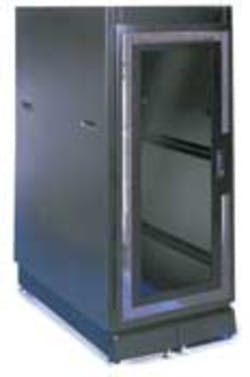The products in EE’s annual spring show case represent most of today’s practical approaches for dealing with interference, including measuring and simulating it.
For example, heavy metal enclosures constrain internally generated electrical noise so it cannot escape. Conversely, noise originating outside the enclosure is kept from impinging upon sensitive electronic assemblies. To the EMC engineer, these functions are of foremost importance, but an enclosure must retain its shielding effectiveness and structural integrity while meeting rugged specifications such as NEBS Zone 4 seismic testing.
At very high frequencies, the fit of seams and doors directly affects an enclosure’s attenuation. That’s where many different types of gaskets and conductive tapes come into play. A large selection of materials is available to suit your application whether EMI/RFI shielding is the gasket’s sole function or if dust and moisture also must be excluded.
An enclosure wouldn’t be complete without cooling fans and their attendant air filters. Several types of filters with different EMI/RFI characteristics are presented. A thick metal honeycomb filter provides very high attenuation but is an overkill in many cases. Much lower-cost filters based on plated plastic honeycomb may be adequate for your needs.
How about stopping interference at its source? Some new types of components as well as miniaturized versions of existing ones now are available. Multilayer varistors dissipate transient energy when the applied voltage exceeds their rated limit. They replace a network of diodes, capacitors, and resistors with a single part.
Common-mode chokes are wound in a manner that produces a high impedance to signals appearing in-phase on both windings while having little effect on differential- or normal-mode signals. Some of these chokes are targeted for use in data communications networks and computer buses such as USB.
And don’t forget the role of ferrites and ferrite beads. Modern communications and data connectors incorporate ferrite into their designs, absorbing transient signals without the necessity of a direct electrical connection. There’s no solder joint to break, nor are separate parts required for each of the connector pins. The trend toward ever-smaller parts also continues as evidenced by the introduction of a 1.0 mm × 2.0-mm package containing four electrically separate ferrite-bead filters.
Several RF amplifiers as well as a number of antennas are among the products. The performance of an EMC receiving antenna is governed by the laws of physics, but locating a preamplifier at the antenna certainly improves the signal-to-noise ratio.
It’s also a good idea to verify test-system performance throughout the required frequency range. When the lobe pattern of a traditional antenna design was closely examined, four lobes were found instead of one. A new computer-aided design soon replaced the previous model.
The RF amplifiers included in the showcase can be thought of as simple gain blocks: mundane until you delve more deeply into their specifications. How linear is it? How linear do you need it to be? How well matched is your load? Can the amplifier drive it, and if so, for how long? As they say, the devil is in the details.
Tackling EMC is daunting, but the products described here give you more opportunities to succeed, from suppressing to shielding and from simulating to measuring. And we’ve made it easy for you to find more information about them. With EE-Evaluation Engineering’s exclusive single-click RSLeads feature, just enter the URL for a product and click on GO. You will be taken directly to the data sheet or the most relevant page on the manufacturer’s site.
EMC Products
Flomerics,
www.rsleads.com/403ee-213
The Heavy-Duty EMI/RFI Shielded Electronic Enclosures provide up to 80 dB of attenuation from 200 MHz to 1 GHz and 60 dB from 1 GHz to 10 GHz. Originally designed for a defense-systems program, the enclosures retain their shielding effectiveness even after completing a NEBS Zone 4 earthquake simulation. The design includes I/O areas for cables, power, fans, and EMI air filtering.
Equipto Electronics,
www.rsleads.com/403ee-210
Com-Power,
www.rsleads.com/403ee-208
ETS-Lindgren,
www.rsleads.com/403ee-211
The Model 2170 USB-to-Fiber-Optic Media Converter and Model 2171 USB HUB-to-Fiber-Optic Media Converter solve the problem of communicating with USB instruments within a shielded enclosure. These devices measure 5.75” × 3.8” × 1.63”, are compliant with USB 1.1 specifications allowing 1.5-Mb/s or 12-Mb/s data transfer rates, and extend the nominal 5-m USB range to 2,000 m to 5,000 m depending on type of fiber. The 2170 connects to the host PC via a USB type B connector. The 2171 uses a USB type A connector to connect to USB peripherals.
ETS-Lindgren,
www.rsleads.com/403ee-212
AVX,
www.rsleads.com/403ee-207
Empower RF Systems,
www.rsleads.com/403ee-209
Adhesives Research,
www.rsleads.com/403ee-206
A range of sizes and styles of EMI shielded enclosures is available. The PROLINE® System of modular components include frames from 0.7 × 0.6 × 0.6 m to 2.2 × 1 × 0.6 m as well as components such as side panels, vented or solid tops, and doors. The single-door, wall-mount CONCEPT® Enclosures range in size from 12” × 12” × 6” to 36” × 24” × 12” and have integral heavy-gauge doors. Shielding effectiveness compared to a standard enclosure is as much as 40 dB higher from 10 MHz to 100 MHz.
Hoffman Enclosures,
www.releads.com/403ee-214
The FM1206T Series of SMD Chokes comprises six parts with typical common-mode impedance at 100 MHz from 90 W to 2,200 W. Intended for IEEE 1394 applications, the chokes have a 50-VDC rating. Resistance ranges from 0.3 W to 1.2 W with corresponding rated current from 370 mA to 200 mA. The chokes are available in quantities of 2,000 in the tape-and-reel format.
Inter-Technical,
www.rsleads.com/403ee-215
Murata Electronics North America,
www.rsleads.com/403ee-217
The 155 Series RJ45 Shielded High-Speed Connectors feature a ferrite filter built into the base of the connector. This design provides controlled insertion loss and has the added benefit of higher reliability because there are no solder joints to fail between the filter and contacts. Crosstalk is reduced by 10 dB compared to a standard connector although the overall dimensions remain the same. Available assemblies have one, two, four, six, or eight ports to reduce cost and simplify mounting where multiple connectors are required.
Regal Electronics,
www.rsleads.com/403ee-221
OPHIR RF,
www.rsleads.com/403ee-219
Spectrum Control,
www.rsleads.com/403ee-227
Schurter,
www.rsleads.com/403ee-225
The EMC Total Integrated Laboratory Environment (TILE) Software has been extended to cover surge/burst and harmonics tests for IEC 61000-4-4, 61000-4-5, and various automotive standards. The TILE main program provides a graphical, flowchart-oriented method of designing and executing EMC tests. Each test routine is defined as a profile, which describes the test steps. Successive steps form a flowchart of test actions, and the actions control changeable information such as descriptions of the EUT and the frequency range appropriate for each test.
Quantum Change,
www.rsleads.com/403ee-220
Silver Cloud Manufacturing,
www.rsleads.com/403ee-226
The EMIPAK Conducted and Radiated Emissions Test Package has been updated in three areas: the spectrum analyzer now is a synthesized model handling frequencies up to 3 GHz, the 1-GHz wideband antenna has been redesigned to cover the frequency band from 30 MHz to 2 GHz, and the EPS 9980 application software is a rewritten and Windows 95/98/NT4-compatible version of the earlier software. As with the original EMIPAK product, all necessary transducers and cabling are included.
Schaffner EMC,
www.rsleads.com/403ee-233
Rogers,
www.rsleads.com/403ee-222
Vector Electronics & Technology,
www.rsleads.com/403ee-232
Laird Technologies,
www.rsleads.com/403ee-216
Schroff,
www.rsleads.com/403ee-223
A range of honeycomb filters provides from 70 to 140 dB of shielding effectiveness depending on the type and size. The 1/8” thick econo-cell filter has 1/8” cells made from type 6061 aluminum and attenuates interference by 70 dB from 1 MHz to 1 GHz. In contrast, the shielding effectiveness of a 1” thick brass-cell with 1/8” cells, made from soldered brass foil, can exceed 140 dB at 1 GHz. All filter types cause minimal reduction of cooling airflow and include a spiral gasket in their frames to ensure continuous contact when mounted.
Spira Manufacturing,
www.rsleads.com/403ee-229
Series E Connectors are protected against ESD and EFT events and intended for sensitive circuit applications. Transient voltage suppressors integrated into the connectors accommodate a range of working voltages from 3.5 to 30 VDC and 2.5 to 25 VAC. In addition, capacitors may be included with values up to 2,200 pF. The connectors come in shell sizes 9, 15, 25, and 37 with industry-standard footprints of 0.318”, 0.405”, and 0.590” in a variety of contact types/terminations and mounting or hardware options.
Spectrum Control,
www.rsleads.com/403ee-228
The CM40 and CM41 Series of Ferrite Common-Mode Chokes provide very small footprint EMI filtering for noise suppression in power applications with up to 75 A continuous operating current. These chokes have a low clearance height and are lighter weight and less susceptible to vibration than older wire-wound products. They come in broadband and low-frequency versions.
Steward,
www.rsleads.com/403ee-230
One knife-edge and two dome-shaped profiles have been added to the company’s range of Metalized Nylon Fabric Over Polyurethane Foam Gaskets. The EMI/RFI shielding gaskets are UL 94 V0 flammability rated and exhibit compression set values of less than 3%. Nickel plating over a conductive copper substrate provides galvanic compatibility and shielding effectiveness with greater than 100-dB attenuation.
Tech-Etch,
www.rsleads.com/403ee-231
Return to EE Home Page
Published by EE-Evaluation Engineering
All contents © 2004 Nelson Publishing Inc.
No reprint, distribution, or reuse in any medium is permitted
without the express written consent of the publisher.
March 2004
